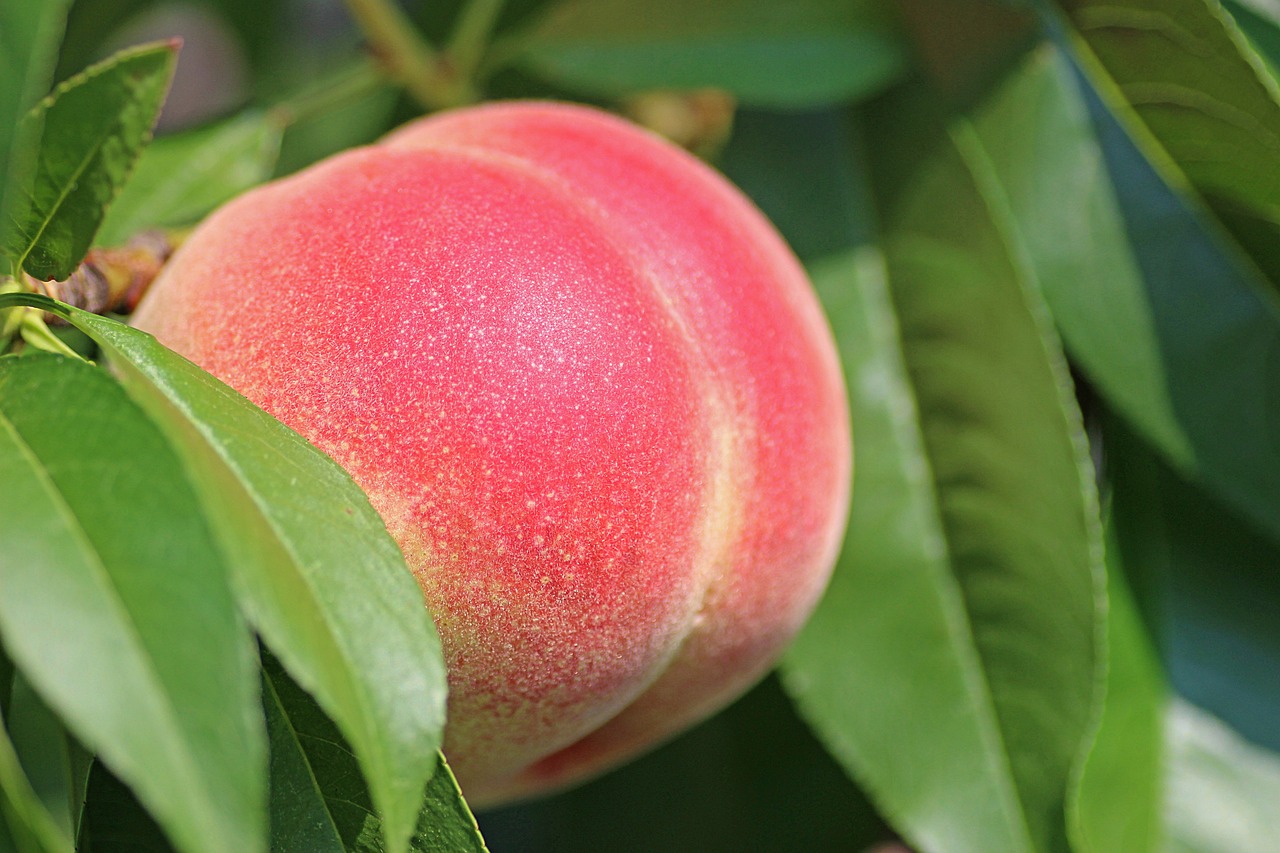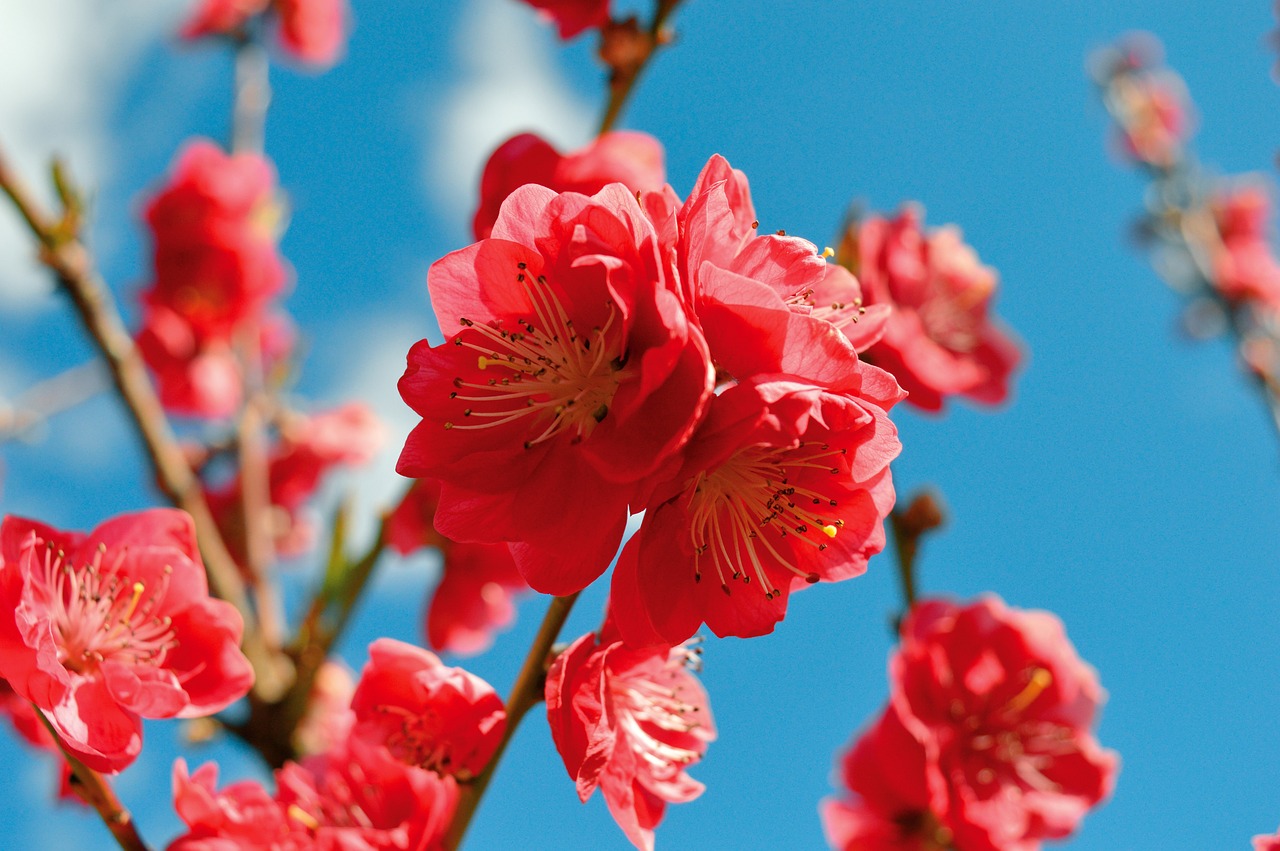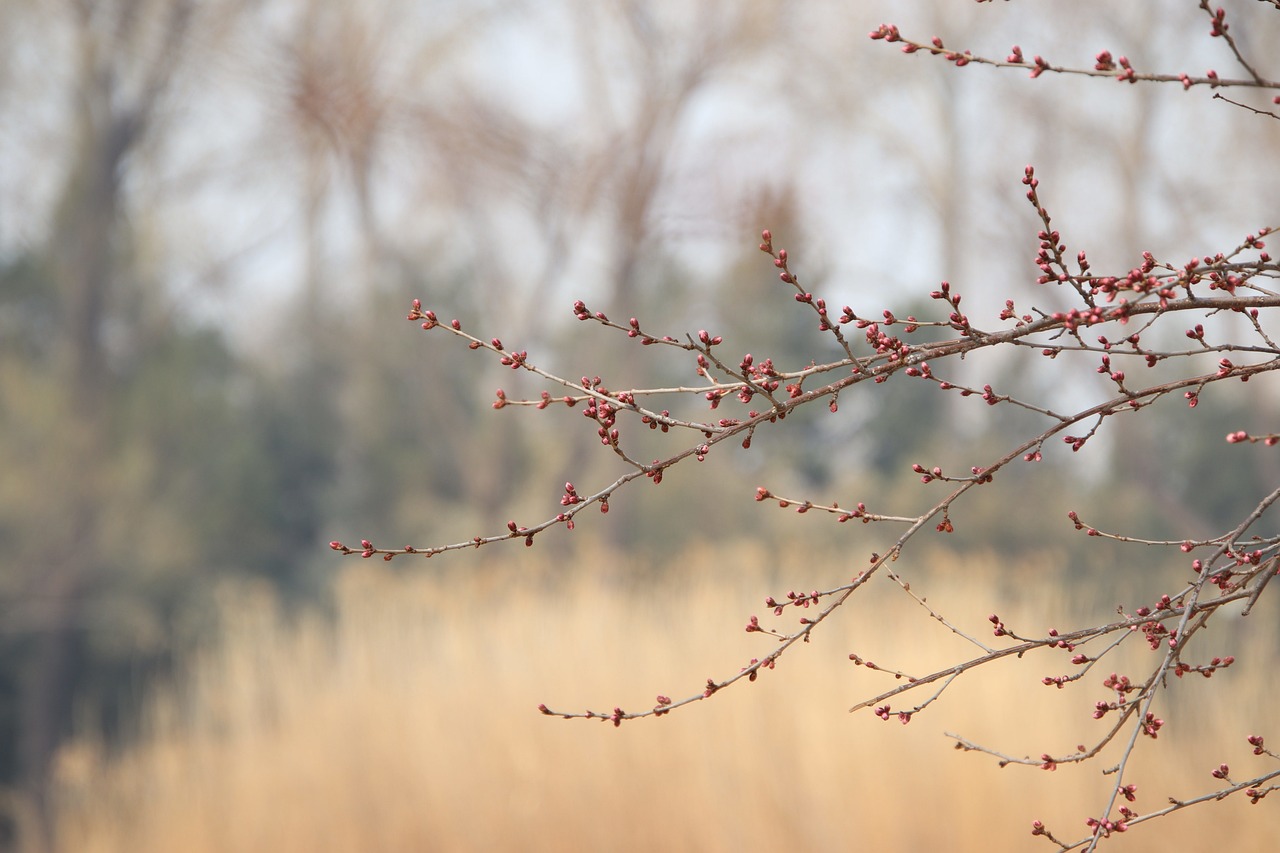Pruning young peach trees is essential for maximizing yield. Proper techniques encourage healthy growth, improve air circulation, and enhance fruit quality. The best methods include central leader pruning, open center pruning, and summer pruning to remove excess growth.
Growing peach trees can be a rewarding experience for both amateur and professional gardeners. Pruning young peach trees is a crucial practice that not only helps in shaping the tree but also maximizes fruit production. By understanding and implementing effective pruning methods, you can ensure that your peach trees thrive and produce delicious fruit for years to come.

Peach trees are known for their beautiful blossoms and sweet fruits. However, without proper care, their growth can become unmanageable, leading to poor fruit quality and reduced yields. Pruning plays a pivotal role in promoting healthy tree structure, enhancing sunlight penetration, and improving airflow among branches. These factors ultimately contribute to the overall health of the tree and the quality of the peaches produced.
Understanding Peach Tree Growth
Before diving into pruning techniques, it is important to understand the growth habits of peach trees. Peach trees generally exhibit rapid growth during their first few years. This growth can lead to overcrowding if not managed properly. As the tree matures, its structure becomes more complex, making early intervention critical.
There are two main types of peach trees: freestone and clingstone. Freestone peaches have flesh that separates easily from the pit, while clingstone peaches have flesh that clings to the pit. Understanding the type of peach tree you have can guide your pruning strategy, as different varieties may have specific requirements.

| Peach Tree Type | Characteristics | Best Pruning Time |
|---|---|---|
| Freestone | Flesh separates easily from the pit | Late winter to early spring |
| Clingstone | Flesh clings to the pit | Late winter to early spring |
When it comes to young peach tree pruning methods, there are several techniques that can be employed based on the desired outcome. The two most common methods are central leader pruning and open center pruning. Each method has its advantages and is suitable for different growing conditions and personal preferences.
Central Leader Pruning
The central leader method involves training the tree to have a single main trunk or leader. This approach encourages a strong central structure that can support heavy fruit loads. It is especially useful for taller peach tree varieties.
To implement central leader pruning:

- Select a strong central branch to serve as the leader.
- Remove competing branches to maintain a clear structure.
- Encourage lateral branches to develop at intervals along the trunk.
- Thin out overly crowded areas to allow sunlight and air circulation.
This method not only promotes stability but also helps in managing the tree’s height, making it easier to harvest fruit when the time comes. Additionally, it reduces the risk of disease by improving airflow within the canopy.
Open Center Pruning
The open center method creates a vase-like structure with several main branches radiating from the center. This technique is ideal for shorter trees or those grown in smaller spaces, as it allows for maximum sunlight exposure and air movement.
To use open center pruning:

- Choose three to five main branches that will form the base of the canopy.
- Remove any inward-growing branches that could obstruct airflow.
- Cut back the central leader to encourage lateral growth.
- Regularly thin out crowded areas to maintain an open structure.
This method is particularly effective in preventing disease and promoting larger fruit yields due to enhanced light penetration and air circulation throughout the tree.
Summer Pruning Techniques
In addition to winter pruning, summer pruning can also be beneficial for young peach trees. This involves removing excess growth during the growing season. Summer pruning helps control tree size and encourages fruit development by redirecting energy to fruit-bearing branches.
During summer pruning:
- Focus on removing suckers – shoots that grow from the base of the tree.
- Trim back overly vigorous branches that compete with fruiting wood.
- Avoid heavy pruning during this time to prevent stress on the tree.
Utilizing these pruning methods effectively will not only enhance your peach tree’s structure but also set the foundation for healthy growth and fruitful harvests in subsequent years. Being proactive with pruning ensures that your young peach trees receive the best care possible, ultimately leading to maximum yield and quality fruit production.
Tools and Techniques for Pruning
Pruning young peach trees requires the right tools and techniques to ensure clean cuts and healthy growth. Using appropriate tools not only makes the job easier but also minimizes stress on the tree. Below are some essential tools and their uses in the pruning process.
Essential Pruning Tools
- Pruning Shears: Ideal for cutting small branches and stems. Choose a pair that is sharp and comfortable to handle.
- Loppers: Useful for cutting thicker branches that are too large for pruning shears. They provide more leverage for easier cutting.
- Saws: A small hand saw or pruning saw is necessary for larger branches. This ensures a clean cut without damaging the tree.
- Gloves: Protect your hands from thorny branches and sharp tools. A good pair of gardening gloves is essential.
- Paintbrush and Sealant: After pruning, use a sealant on large cuts to prevent disease and pests from entering the tree.
Using high-quality tools will make the pruning process more efficient. Always ensure your tools are clean and sharp to avoid damaging the tree during cuts. Dull tools can crush branches instead of making clean cuts, which may lead to disease.
Timing Your Pruning
The timing of pruning is critical for maximizing yield. Understanding the best times to prune can greatly influence the health of your peach trees and the amount of fruit produced. Here are some guidelines for optimal pruning timing.
Winter Pruning
Winter pruning is typically done while the tree is dormant. This is usually in late winter or early spring before new growth begins. The advantages of winter pruning include:
- Stronger Growth: Pruning during dormancy encourages vigorous new growth in spring.
- Visibility: Without leaves, it is easier to see the tree structure and identify which branches need to be removed.
- Disease Prevention: Pruning in winter can reduce the risk of disease, as many pathogens are less active during cold months.
Summer Pruning
As mentioned previously, summer pruning focuses on controlling growth and redirecting energy towards fruit production. It is usually performed after the tree has leafed out but before the fruit begins to set. Benefits of summer pruning include:
- Improved Airflow: Removing excess foliage helps increase air circulation around the fruit, reducing the risk of fungal infections.
- Fruit Quality: Encouraging energy transfer from non-fruit-bearing branches to those that produce fruit improves overall quality.
- Size Management: Summer pruning can help keep trees at a manageable height for easier harvesting and maintenance.
Pruning Techniques for Different Growth Stages
Younger peach trees require different pruning techniques compared to more mature trees. Understanding these stages can help you apply the right methods to support healthy development throughout their lifespan.
First Year Pruning
In the first year, focus on establishing a strong foundation for your peach tree. Key actions include:
- Selecting a Leader: Choose a single strong leader branch that will grow upward, ensuring it remains straight and dominant.
- Removing Competing Shoots: Eliminate any competing branches that might hinder the leader’s growth.
- Selecting Scaffolding Branches: Identify 3-5 strong lateral branches that will develop into the tree’s framework.
Second Year Pruning
The second year is crucial for shaping your young peach tree. Focus on:
- Thinning Out: Remove weak or crowded branches to allow better light exposure and airflow.
- Encouraging Lateral Growth: Trim back excess growth to promote lateral branching, which supports fruit development.
- Maintaining Structure: Continue to support the central leader while shaping the tree into an open center or vase shape as desired.
Common Mistakes to Avoid
While pruning is essential, there are common mistakes that gardeners should avoid to ensure healthy peach tree growth. Being aware of these pitfalls can help you become a more effective pruner.
- Over-pruning: Removing too much foliage can stress the tree and reduce fruit production. Aim for a balanced approach.
- Poor Timing: Pruning at the wrong time can lead to decreased yields or even damage to the tree. Always consider seasonal changes.
- Neglecting Tools: Using dull or dirty tools can harm the tree and introduce diseases. Always maintain your equipment.
- Ignoring Tree Health: If a tree shows signs of disease or stress, prioritize addressing those issues before proceeding with pruning.
Avoiding these mistakes will enhance your ability to care for young peach trees effectively. By employing proper techniques, timing, and tools, you can maximize yield and ensure robust health in your peach orchard.
Understanding Fruit Development in Peach Trees
In order to effectively prune young peach trees, it is essential to understand the stages of fruit development. Different stages require specific care and attention to ensure optimal growth and yield. Knowing how the tree develops fruit can influence your pruning strategy.
Flowering Stage
The flowering stage typically occurs in early spring and marks the beginning of the fruiting process. It is crucial to recognize that:
- Pollination: This stage is vital for successful fruit set. Ensure that there are adequate pollinators nearby, as good pollination leads to higher yields.
- Pest Management: Flowers can attract pests. Monitor for any signs of infestations during this time.
- Frost Protection: Late frosts can damage blossoms. Be prepared to cover the trees if a frost warning is issued during flowering.
During this stage, avoid heavy pruning, as it may remove potential fruit-bearing branches. Light pruning can be performed to shape the tree and maintain an open structure.
Fruit Development Stage
After successful pollination, the fruit will start to develop. This stage lasts from late spring to early summer, and it is critical for ensuring quality fruit production. Key points include:
- Thinning Fruit: As fruits begin to form, it is beneficial to thin them out. This involves removing some of the developing peaches to prevent overcrowding and encourage larger fruit growth.
- Nutrient Supply: Ensure that the tree receives adequate nutrients during this period. A balanced fertilizer can support healthy fruit development.
- Watering: Consistent watering is essential, especially during dry spells. Deep watering encourages strong root development, which supports fruit growth.
Pruning for Fruit Quality
Pruning not only influences quantity but also affects the quality of the fruit produced by your peach trees. To maximize the quality of your peaches, consider the following pruning strategies:
Encouraging Sunlight Penetration
Sunlight is a crucial factor in fruit quality. Ensuring that sunlight reaches all parts of the tree can lead to better flavor and sweetness. Here’s how to encourage sunlight penetration:
- Remove Crowded Branches: Thinning out crowded areas allows light to reach inner branches and fruit.
- Train Branches: Use ties to angle branches outward, opening up the canopy for better sunlight access.
- Maintain an Open Center: Choose a pruning method that promotes a vase-like structure, ensuring sunlight reaches all branches.
Balancing Growth and Fruit Production
It is essential to balance vegetative growth with fruit production. Too much focus on one can negatively impact the other. To achieve this balance:
- Selective Pruning: Remove excessive vegetative growth that does not contribute to fruit production while maintaining enough foliage for energy absorption.
- Focus on Fruiting Wood: Prioritize pruning older growth that has already produced fruit, allowing young wood to take its place.
- Avoid Over-Fertilization: Too much nitrogen can lead to excessive leaf growth at the expense of fruits. Use a balanced fertilizer appropriate for peach trees.
Pest and Disease Management During Pruning
Pest and disease management is an integral part of caring for young peach trees. During pruning, you can take steps to minimize the risk of infection or infestation. Here are some key practices:
Identifying Common Pests
Common pests that affect peach trees include:
- Peach Tree Borer: These pests can bore into the trunk and kill young trees. Look for signs such as frass or sawdust.
- Aphids: Small insects that can damage new growth and reduce tree vigor.
- Scale Insects: These pests attach themselves to branches and can weaken the tree over time.
Disease Prevention Techniques
Preventing diseases such as peach leaf curl and brown rot is essential for maintaining a healthy tree. Implement these strategies:
- Cleansing Tools: Always sanitize your pruning tools before and after use to prevent spreading diseases.
- Proper Spacing: Ensure adequate spacing between trees for airflow, which can help reduce fungal diseases.
- Monitoring Symptoms: Regularly check your trees for signs of disease. Early detection is key to effective management.
Utilizing Resources for Successful Pruning
Successful pruning requires knowledge and practice. Utilizing available resources can enhance your understanding and skills. Consider these resources:
Extension Services
Your local agricultural extension service often provides valuable information on best practices for pruning peach trees specific to your region. They may offer workshops, guides, or even one-on-one consultations.
Online Resources
Many universities and horticultural organizations have online resources that provide detailed guidance on pruning techniques, pest management, and tree care.
Books and Guides
Investing in books focused on fruit tree cultivation can provide in-depth knowledge on various aspects of peach tree care, including pruning methods tailored for different growth stages.
By leveraging these resources, you can refine your pruning techniques and improve your overall peach tree management strategy, ultimately leading to a more fruitful harvest.
Additional Considerations for Peach Tree Care
While pruning is a vital aspect of managing young peach trees, there are several additional factors to consider that can further enhance the health and productivity of your trees. These elements work in conjunction with pruning to create an ideal growing environment.
Soil Management
The foundation of any healthy tree is its soil. Healthy soil provides essential nutrients and supports root development. To ensure your peach trees thrive, consider the following soil management practices:
- Soil Testing: Periodically test your soil to determine its pH and nutrient levels. This information can guide your fertilization strategy.
- Organic Matter: Incorporate organic matter such as compost or well-rotted manure to improve soil structure and fertility.
- Mulching: Apply a layer of mulch around the base of the tree. Mulch conserves moisture, suppresses weeds, and regulates soil temperature.
Irrigation Practices
Proper watering is crucial for the growth and fruiting of peach trees. Here are some best practices for irrigation:
- Deep Watering: Water deeply and less frequently to encourage deep root growth. This helps trees become more drought-resistant.
- Watering Schedule: Adjust your watering schedule based on weather conditions and tree age. Newly planted trees require more frequent watering than established ones.
- Avoid Overwatering: Be cautious of waterlogged soil, which can lead to root rot and other diseases. Ensure proper drainage around the root zone.
Pest and Disease Management Beyond Pruning
While pruning helps manage some pest and disease issues, ongoing vigilance is necessary throughout the growing season. Here are additional strategies for pest and disease management:
- Regular Monitoring: Check your trees frequently for signs of pests or diseases. Early detection can prevent larger infestations.
- Cultural Practices: Implement cultural practices such as crop rotation and diversity planting to disrupt pest life cycles.
- Integrated Pest Management (IPM): Utilize IPM strategies that combine biological, cultural, and chemical controls when necessary. This approach minimizes harm to beneficial insects.
Harvesting Techniques
Once your peach trees have matured and produced fruit, proper harvesting techniques are essential for preserving fruit quality. Here are some tips for harvesting peaches:
- Timing: Harvest peaches when they are fully colored and slightly soft to the touch. Peaches do not continue to ripen significantly after being picked.
- Gentle Handling: Handle peaches gently to avoid bruising. Use clean, dry containers for collecting fruit.
- Storage Conditions: Store harvested peaches in a cool, dry place. They can be kept at room temperature for a few days but should be refrigerated if longer storage is necessary.
Final Thoughts
Caring for young peach trees through proper pruning methods not only enhances fruit yield but also promotes overall tree health. By understanding the growth stages, employing correct pruning techniques, and integrating various management practices, you can cultivate a thriving peach orchard.
The journey of growing peach trees is rewarding but requires diligence and knowledge. From selecting the right tools to understanding the importance of soil, irrigation, and pest management, every detail contributes to the success of your trees.
Investing time in learning about best practices will pay off with bountiful harvests of delicious peaches. Whether you are a novice gardener or an experienced grower, applying these principles will help you achieve maximum yield and enjoy the fruits of your labor for years to come.
Your commitment to continuous learning and adaptation will ultimately determine the success of your peach growing endeavors. Embrace the process, enjoy the journey, and look forward to savoring the sweet rewards from your well-tended peach trees.
